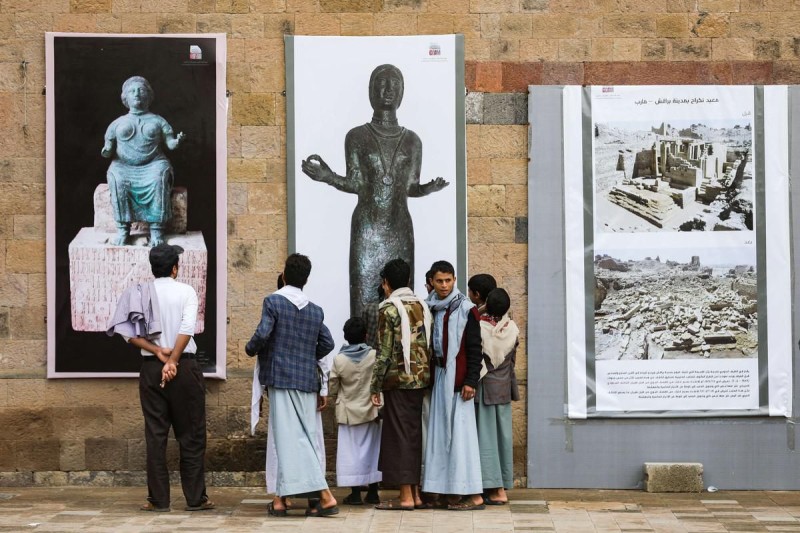Lack of Resources in Yemen Due to COVID-19 and Violence


Yemen, a country bordering both Saudi Arabia and Oman is facing increased hardships with its resource distribution. Undergoing a devastating period of political instability in addition to the outbreak of COVID-19, Yemen is tasked with overcoming numerous humanitarian obstacles. However, amidst the uncertainty, nonprofit organizations have stepped up to fight the lack of resources in Yemen in times of turmoil.
The primary factor which led to the lack of resources in Yemen is the overthrow of its government by the Houthis, a Zaydi Shiite movement, and the resulting offensive led by Saudi Arabia. The violence these groups incited led to devastating consequences for Yemen’s citizens. In the past, religious, socioeconomic and language divisions have troubled Yemen. With numerous groups blockading pieces of territory through violent means, citizens are not granted access to necessary resources.
Another primary cause of the lack of resources in Yemen is the growing cases of COVID-19. With about 1,730 cases, more than 488 individuals have passed. The rapid spread of COVID-19 has extremely limited the levels of outreach, hurting thousands of families.
Additionally, Yemen has also been subject to a massive cholera outbreak. Cholera, a widespread infection, has reached more than 1.2 million citizens in Yemen. With the cases only increasing, many are left bed-ridden, which further hurts Yemen.
The increased violence heavily impacted hundreds of thousands of families. Starvation plagues the nation, and resources are depleting quickly. More than 9.58 million children do not have sufficient access to safe water, and the number of malnourished children in the country could reach 2.4 million — a 20% increase — by the end of the year.
Food prices in Yemen have also skyrocketed, increasing the burden on families. The price of a month’s worth of essential food rose by more than 15% in the last year, and this cost will only continue upwards. As reduced budgets leave families starving, many cannot survive the harsh conditions.
In addition to starvation, the environment also forces families in Yemen into homelessness. The threat of famine and cold temperatures displaced more than 75,000 families without a place to live. As the winter months worsen, many of the battling groups ignore calls for a ceasefire and continue bombarding nearby communities. Families are forced to live in these violent conditions are often left without shelter.
The presence of COVID-19 and the violent acts of military opposition have limited access to proper medical supplies. With more than 75% of Yemen’s population requiring some form of humanitarian assistance, families are left untreated as the lack of resources in Yemen worsens their conditions.
However, despite the numerous obstacles that Yemen’s citizens must overcome, various non-profit organizations have taken to helping those in need. Direct Relief, a humanitarian organization, has centered its efforts on bolstering the healthcare sector.
By mobilizing numerous volunteers, Direct Relief was able to send more than 66 tons of medicines and medical supplies to Yemen, helping hundreds of thousands of citizens burdened by the Cholera outbreak. In addition, Direct Relief built the “Pink Clinic,” the first-ever breast and cervical cancer early detection center in the southern city of Lahj. They have helped more than 100,00 citizens access medical resources.
Another prominent organization is UNICEF, which has made large strides to help the underprivileged in Yemen. They have shipped crucial supplies like 18,000 COVID-19 tests as well as more than 33,000 N95 respirators, 33,000 face shields and 18,000 gowns to Yemen.
In addition to shipping supplies, UNICEF has focused its efforts on the youth. In an effort to ensure the youth’s safety, UNICEF volunteers also helped with victim assistance and education on mines left by war. By teaching these necessary skills, children can look out for their ever-changing environment.
A third organization that has devoted their efforts towards helping Yemen is Islamic Relief U.S.A. They have built numerous water source systems and delivered packaged goods to more than 100,000 individuals in need. In addition, Islamic Relief U.S.A has integrated nutritional programming for women and acutely malnourished children. Through these programs, hundreds of thousands of individuals will receive the necessary resources to escape starvation.
With the violence continuing through the present day, Yemen’s future seems uncertain. Amidst the outbreak of COVID-19, cholera and political disputes, the citizens of Yemen must be heavily cautious.
With Yemen solely depending on nonprofit organizations for aid, only a fraction of citizens receives the necessary resources to survive. As a country with more than 28 million citizens, international organizations cannot cater to the needs of all those displaced. Volunteers can’t keep up with the severe lack of resources in Yemen.
Outside of intervention of military forces, other countries must develop partnerships to aid the needy. In addition,to the displaced citizens, countries must enforce laws that aid the ones who flee due to the violence from their environment. If Yemen were to receive this aid on an international scale, they would set themselves up for a bright future, filled with resources.

Sana’a – The General Authority for Antiquities and Museums, operating under the control of the Houthi militia in the occupied capital S…

Hadramout — UNESCO has officially inscribed Al-Dan Hadrami, a traditional poetic and musical art form from Yemen’s Hadramawt region, on…

NewYourk  -- The renowned auction house Sotheby’s has revealed plans to present one of the rarest surviving Yemenite Torah scrolls in it…